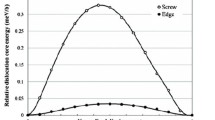Abstract
This paper provides an introduction for non-experts to first-principles electronic structure methods that are widely used in condensed-matter physics. Particular emphasis is placed on giving the appropriate background information needed to better appreciate the use of these methods to study actinide and other materials. Specifically, the underlying theory is described in sufficient detail to enable an understanding of the relative strengths and weaknesses of the methods. In addition, the meaning of commonly used terminology is explained, including density functional theory (DFT), local density approximation (LDA), and generalized gradient approximation (GGA), as well as linear muffin-tin orbital (LMTO), linear augmented plane wave (LAPW), and pseudopotential methods. Methodologies that extend the basic theory to address specific limitations are also briefly discussed. Finally, a few illustrative applications are presented, including quantum molecular dynamics (QMD) simulations and studies of surfaces, impurities, and defects. The paper concludes by addressing the current controversy regarding magnetic calculations for actinide materials.
Similar content being viewed by others
References
R.M. Martin: Electronic Structure: Basic Theory and Practical Methods (Cambridge University Press, Cambridge, UK, 2004).
P. Hohenberg, W. Kohn: Inhomogeneous electron gas. Phys. Rev. 136, B864 (1964).
W. Kohn, L.J. Sham: Self-consistent equations including exchange and correlation effects. Phys. Rev. 140, A1133 (1965).
M.T. Yin, M.L. Cohen: Theory of static structural properties, crystal stability, and phase transformations: Application to Si and Ge. Phys. Rev. B 26, 5668 (1982).
P. Söderlind, A. Landa: Crystal stability and equation of state for Am: Theory. Phys. Rev. B 72, 024109 (2005).
D.M. Ceperley, B.J. Alder: Ground state of the electron gas by a stochastic method. Phys. Rev. Lett. 45, 566 (1980).
W.G. Aulber, L. Jonsson, J.W. Wilkins: Quasiparticle calculations in solids. Solid State Physics 54, 1 (2000).
L.X. Benedict, E.L. Shirley: Ab initio calculation of ∈2(ω) including the electron-hole interaction: Application to GaN and CaF2. Phys. Rev. B 59, 5441 (1999).
G. Kotliar, D. Vollhardt: Strongly correlated materials: Insights from dynamical mean-field theory. Phys. Today 57(3), 53 (2004).
K. Held, A.K. McMahan, R.T. Scalettar: Cerium volume collapse: Results from the merger of dynamical mean-field theory and local density approximation. Phys. Rev. Lett. 87, 276404 (2001).
X. Dai, S.Y. Savrasov, G. Kotliar, A. Migliori, H. Ledbetter, E. Abrahams: Calculated phonon spectra of plutonium at high temperatures. Science 300, 953 (2003).
R.Q. Hood and L.H. Yang: unpublished.
D.D. Johnson, D.M. Nicholson, F.J. Pinski, B.L. Györffy, G.M. Stocks: Total-energy and pressure calculations for random substitutional alloys. Phys. Rev. B 41, 9701 (1990).
A. Landa, P. Söderlind, A. Ruban, L. Vitos, L. Pourovskii: First-principles phase diagram of the Ce-Th system. Phys. Rev. B 70, 224210 (2004).
P. Söderlind, B. Sadigh: Density-functional calculations of α, β, γ, δ, δ′, and ∈ plutonium. Phys. Rev. Lett. 92, 185702 (2004).
Author information
Authors and Affiliations
Corresponding author
Additional information
Papers in this section are based on submissions to the MRS Symposium Proceedings that were selected by Symposium Organizers as the outstanding paper. Upon selection, authors are invited to submit their research results to Journal of Materials Research. These papers are subject to the same peer review and editorial standards as all other JMR papers. This is another way by which the Materials Research Society recognizes high quality papers presented at its meetings.
This paper was selected as the Outstanding Meeting Paper for the 2005 MRS Fall Meeting Symposium JJ Proceedings, Vol. 893.
Rights and permissions
About this article
Cite this article
Klepeis, J.E. Introduction to first-principles electronic structure methods: Application to actinide materials. Journal of Materials Research 21, 2979–2985 (2006). https://doi.org/10.1557/jmr.2006.0371
Received:
Accepted:
Published:
Issue Date:
DOI: https://doi.org/10.1557/jmr.2006.0371




